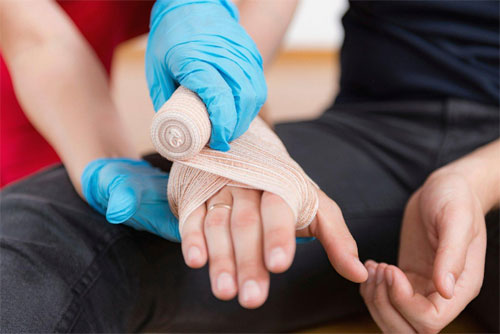Introduction
In the world of education, especially within child care settings, emergencies can occur anytime. Comprehending instant response duties is essential for educators, caregivers, and moms and dads alike. Not only does it encompass standard first aid expertise, but it likewise entails a cpr certification course online collection of methods and abilities that need to be grasped to guarantee the safety and security of youngsters. From managing minor wounds to providing an EpiPen during an allergic reaction, this thorough guide will delve into the myriad responsibilities that include immediate actions in educational environments.
Immediate Feedback Responsibilities: What to Do When Emergency situations Arise
The term "immediate action responsibilities" refers to the activities and decisions that require to be taken when an emergency situation takes place. These circumstances can range from minor incidents like play area problems to a lot more severe situations entailing clinical emergencies. The focus here is on quick responses that can significantly influence the result for children involved.
Understanding Emergency Circumstances in Education
Emergency scenarios can vary widely in nature and extent. Some common instances consist of:
- Choking Incidents: Youngsters might inadvertently choke on food or tiny objects. Allergic Reactions: Circumstances calling for EpiPen administration as a result of serious allergies. Minor Injuries: Scrapes, cuts, and swellings from play. Medical Emergencies: Bronchial asthma assaults or seizures that require instant attention.
Recognizing Bronchial asthma Signs and symptoms in Children
Asthma is a widespread problem among youngsters and recognizing how to recognize its signs and symptoms can save lives. Common indicators consist of:
- Coughing frequently Shortness of breath Wheezing audios when exhaling Chest tightness
Choking Avoidance Techniques for Educators
Preventing choking occurrences should be a concern in educational settings. Here cpr first aid training near me are some reliable approaches:
Age-Appropriate Foods: Guarantee that food given appropriates for children's ages. Supervision During Meals: Constantly screen kids while they eat. Education on Food Choices: Show children about foods that posture choking hazards.EpiPen Management Protocols
When handling allergies, EpiPens can be life-saving tools. Here's exactly how to carry out one:
Remove the EpiPen from its case. Hold the EpiPen strongly and get rid of the security cap. Press the pointer against the external thigh till it clicks. Hold it in place for concerning 10 seconds prior to removing.Managing Minor Wounds Effectively
Injuries are inescapable when handling energetic kids; thus, comprehending just how to take care of small wounds is vital:

Child Defibrillation Guidance
For severe instances where a child might experience heart attack, knowing how to use an AED (Automated External Defibrillator) is cpr first aid professionals crucial:
Turn on the AED and comply with voice prompts. Attach pads as shown on the device. Ensure no person is touching the child prior to delivering a shock if suggested by the AED.Building Educator Self-confidence With Training
Educators play a pivotal duty in emergency situation response scenarios; therefore it's critical they feel confident in their capabilities:
HLTAID012 Accreditation Australia Overview
The HLTAID012 accreditation outfits teachers with needed emergency treatment skills customized specifically for instructional atmospheres:
- Duration of training commonly extends over a number of hours consisting of both written and useful components. It covers subjects such as CPR techniques, managing injuries, and incident reporting protocols.
Written vs Practical Components of First Aid Training
Training programs like HLTAID012 make up both theoretical knowledge and hands-on technique:
|Element|Summary|| --------------------|--------------------------------------------------|| Composed|Comprehending procedures, regulations, and treatments|| Practical|Hands-on technique making use of mannequins or simulation|

Renewal Timelines for First Aid Certifications
Staying updated with first aid accreditations is necessary for teachers:
- Most qualifications require renewal every 3 years. Regular updates keep educators educated regarding new methods or modifications in protocols.
Childcare Centre Emergency treatment Package Essentials
A well-stocked first aid set is essential in any type of child care centre setting:
Essential Things Include:
Band-aids of numerous sizes Antiseptic wipes Gauze pads Adhesive tape Disposable gloves ScissorsFirst Help Basics for Parents
Parents should also be equipped with necessary first aid expertise:
Know just how to deal with high temperatures effectively. Recognize signs and symptoms of dehydration or heat fatigue during hot weather. Create a home-based first aid package tailored for childhood needs.Childcare Safety and security Dangers Assessment
Regular assessments assist determine possible hazards within childcare settings-- some usual dangers consist of:
Slippery floors Sharp items within reach Playground equipment safety checksRegularly assessing these risks makes sure safety and security standards are consistently maintained.
FAQs About Immediate Action Responsibilities
1) What need to I do if a youngster chokes?
- Administer back strikes followed by stomach drives if they can not take a breath or speak.
2) Just how usually should I restore my HLTAID012 certification?
- Every three years according to Australian regulations.
3) What things are necessary for a childcare emergency treatment kit?
- Band-aids, antiseptics, gauze pads, scissors, non reusable handwear covers ought to all be included.
4) Just how can I avoid play area mishaps?
- Conduct routine evaluations of playground equipment and supervise youngsters throughout play actively.
5) What are asthma action plans?
- A personalized strategy developed with doctor detailing actions to take during a bronchial asthma attack.
6) Exactly how do I identify indicators of sensitive reactions?

- Look out for hives, swelling around the face or mouth, difficulty breathing or wheezing noises; act quickly!
Conclusion
Immediate action responsibilities are not just jobs; they embody a dedication to securing youngsters's health and wellness and well-being within academic atmospheres. By understanding procedures connected to choking prevention, EpiPen management, small injury management, and a lot more-- educators can properly react when emergencies emerge while confidently constructing depend on amongst parents and stakeholders alike.
By staying informed via accreditations like HLTAID012 give first aid in education and learning programs and maintaining first aid kits stocked-- everyone plays a part in developing protected knowing settings conducive to growth and expedition while ensuring every youngster's safety and security stays paramount!